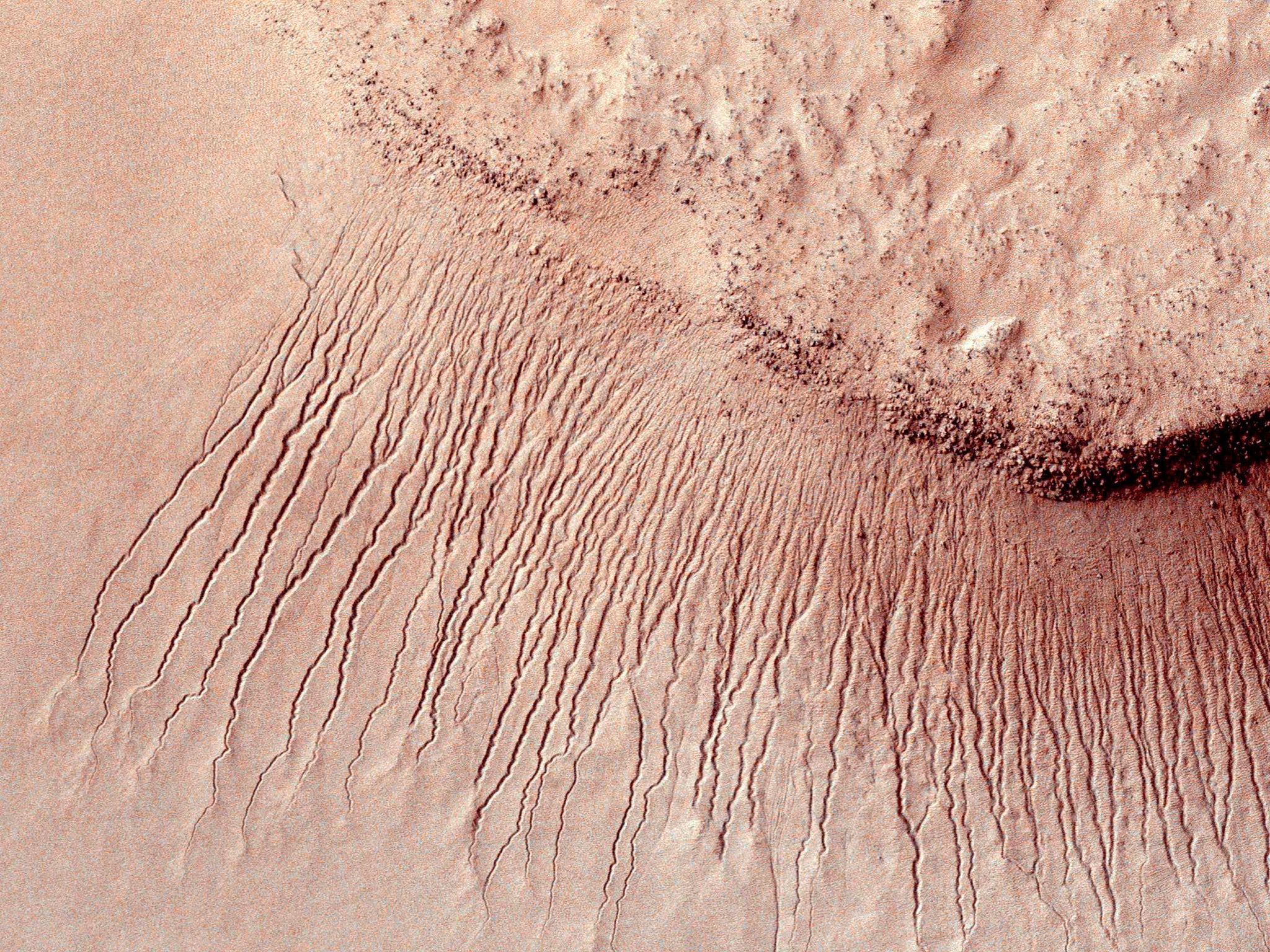Nasa Mars announcement: Red Planet’s atmosphere was blown away by bursts of gas from the Sun, scientists suggest
The slow destruction of the planet’s atmosphere was caused by huge rope-like tendrils of magnetic rotations, scientists say, as they reveal data that showed that Mars has huge aurora akin to the Earth’s northern lights

Your support helps us to tell the story
From reproductive rights to climate change to Big Tech, The Independent is on the ground when the story is developing. Whether it's investigating the financials of Elon Musk's pro-Trump PAC or producing our latest documentary, 'The A Word', which shines a light on the American women fighting for reproductive rights, we know how important it is to parse out the facts from the messaging.
At such a critical moment in US history, we need reporters on the ground. Your donation allows us to keep sending journalists to speak to both sides of the story.
The Independent is trusted by Americans across the entire political spectrum. And unlike many other quality news outlets, we choose not to lock Americans out of our reporting and analysis with paywalls. We believe quality journalism should be available to everyone, paid for by those who can afford it.
Your support makes all the difference.Mars’s once hospitable atmosphere could have become so dry and cold because bursts from the sun that battered it during its early history, according to new studies released by Nasa.
Measurements from Nasa’s Mars Atmosphere and Volatile Evolution (Maven) mission show that the atmosphere was ripped away by a huge burst of gas and magnetism from the Sun. The results of the mission bring far more detail to scientists’ understanding of how the Martian atmosphere changed during its early life.
When it was younger, Mars was much warmer and wetter — and so potentially far more hospitable to life. But at some point since, it has dried out and become far colder, making it harder to live there and leaving life very rare if it exists at all.
Instruments on board the Maven craft found that ions were escaping from the planet at a much quicker rate during solar bursts, or coronal mass ejections. Watching one such event in March, it saw huge magnetic rotations that were flying out thousands of miles into space — and that ions were spewing out into space along those huge magnetic ropes.
The ions that left the planet earlier in its life likely did so along the same route, getting flung out into the atmosphere and so making the planet the harsh landscape that it is today.
Another study looked at an aurora that could be seen on Mars’s northern hemisphere. It showed that aurora — which is akin to the Earth’s northern lights — dipped low into the Red Planet’s atmosphere.
Mars’s aurora is probably caused by the magnetic field in the crust, rather than the magnetism of the poles as it is in the Earth.
A third paper announced by Nasa supported the idea that magnetic fields related to the sun were changing the atmosphere on Mars. By analysing occasions when Maven dipped into the atmosphere of Mars and studied its makeup, it found that variations suggested magnetic fields were key to its changes — and that much of that magnetic field was being contributed by Mars’s surface.
Scientists said that the second study will allow scientists to explore the way that the solar wind and Mars’s atmosphere interact, and find what is keeping that atmosphere from escaping.
The fourth study released by Nasa explored the dust that was found in the Martian atmosphere. Scientists say that there is no process known that could whip dust up so high, and it is not coming from Mars’ moons — and so the dust is likely coming entirely away from the planet.
Join our commenting forum
Join thought-provoking conversations, follow other Independent readers and see their replies
Comments